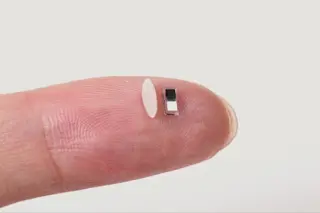Human genetic engineering is not new; it has been going on for a long, long time — naturally. Ancient viruses are really good at inserting themselves and modifying human gene code. Over millennia, constant infections would come to mean that 8 percent of the entire human genome is made up of inserted virus code. All this gene recoding of our bodies occurred under Darwin’s rules, natural selection and random mutation. But nonrandom, deliberate human genetic engineering is new, and it is a big deal. As of 1990, increasingly genetically modified humans walk among us. More and more gene therapies carry new instructions into our bodies and place them in the right spots; in so doing, they modify our most fundamental selves, our core, heretofore slow-evolving DNA. We are still in the very early stages of effectively hijacking viruses for human-driven purposes; just a few years ago it took a long ...
With Gene Therapy We Could Direct Our Own Evolution
Explore the world of human genetic engineering and its rapid evolution in treating diseases with gene therapy trials.
More on Discover
Stay Curious
SubscribeTo The Magazine
Save up to 40% off the cover price when you subscribe to Discover magazine.
Subscribe












